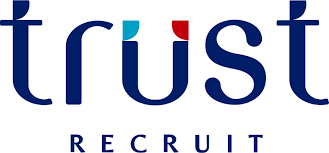Head of Marine & HSSEQ
The Head of Marine, Health, Safety, Security, Quality and Environment (HSSQE) has a clear understanding of company requirements for mainitining marine operational standards of the fleet of vessels while also maintianing the SAfety Management SYstem. He/ She will hold a critical position overseeing the safety, security, and environmental aspects of the company's operations and marine operational readiness of the fleet. In addition the position will also take on the role of DPA & CSO. This role is crucial in ensuring compliance with maritime regulations, industry standards, and company policies. Here are the typical duties and responsibilities associated with this position:
Regulatory Compliance & Operational Readiness:
(A) Ensure compliance with all relevant maritime laws, regulations, international conventions, and industry standards related to health, safety, environment, and security.
(B) Keep abreast of regulatory changes and updates to ensure the company's continuous compliance.
(C) Ensure the fleet maintains cargo worthiness at all times and all cargo gears and cargo holds are adequately maintained and prepared and required critical spares are in maintained in stock.
Designated Person Ashore (DPA) Responsibilities:
(A) Act as the DPA, overseeing the company's safety management system (SMS) and ensuring it is properly implemented, maintained, and effective.
(B) Monitor the performance of the SMS, conduct internal audits (AUD03), and initiate corrective actions to address deficiencies and non-conformities.
Company Security Officer (CSO) Responsibilities:
(C) Act as the CSO and oversee the company's maritime security measures and compliance with the International Ship and Port Facility Security (ISPS) Code.
(D) Develop, implement, and maintain the Ship Security Plan (SSP) and conduct regular security assessments and drills.
Health, Safety, Environment, and Quality (HSSQE) Management:
(E) Develop, implement, and maintain the company's integrated HSSQE management system, policies, procedures, and guidelines.
(F) Monitor and analyse HSSQE performance, incidents, and trends to identify areas for improvement and drive continuous enhancement.
Safety Culture Promotion:
(G) Promote a strong safety culture throughout the organization, encouraging reporting, learning from incidents, and empowering employees to actively engage in safety initiatives.
(H) Conduct safety training and awareness programs to educate employees on safety procedures and practices.
(I) Ensure there is a schedule of visits to vessel which covers HSSQE matters. Minimum number of visits by shore staff to be two per year. Ensure there is a guideline for office visit to vessels that includes HSSQE matters. Shore staff visiting the vessels should lead by example and promote the concept of HSSQE excellence.
(J) Findings and feedback from vessel visits are communicated to the rest of the fleet to ensure that all vessels are on track of achieving HSSQE Excellence.
(K) Findings and feedback from vessel visits are analysed and shared within organization and with vessels.
Emergency Response and Crisis Management:
(L) Develop and maintain emergency response plans and procedures for various scenarios, ensuring readiness to handle emergencies effectively.
(M) Conduct regular emergency drills and exercises to test and improve the preparedness of the organization.
Environmental Compliance:
(N) Develop and oversee the company's environmental management program, ensuring compliance with environmental laws and regulations.
(O) Implement strategies to minimize the environmental impact of company operations and promote environmental sustainability.
Quality Management:
(P) Oversee the company's quality management system, ensuring adherence to quality standards, certifications, and continuous improvement initiatives.
(Q) Monitor and analyse quality performance and customer feedback to identify areas for enhancement and implement necessary improvements.
Risk Assessment and Mitigation:
(R) Conduct risk assessments related to safety, security, environment, and quality and develop strategies to mitigate identified risks effectively.
(S) Work with relevant departments to implement risk reduction measures and ensure proactive risk management practices.
Communication and Training:
(T) Communicate HSSQE policies, updates, and best practices to employees at all levels of the organization.
(U) Provide HSSQE training to employees, ensuring that they are well-informed and compliant with all safety, security, and environmental protocols.
The Head of HSEQ (DPA and CSO) is vital in maintaining a strong safety and compliance culture within the company, ensuring adherence to industry regulations, promoting environmental sustainability, and enhancing the overall health, safety, security, environment, and quality aspects of the organization's maritime operations.
Education and Qualifications
The applicant requires the following educational background and qualifications:
1) A degree in Navigation or similar maritime degree
2) CoC Class 1 (Master)
3) Previous on-shore experience in a similar role
4) DPA and CSO certification
Job-Specific Skills
1) Strong knowledge of bulk vessels’ regulatory requirements and voyage regulations and operational requirements.
2) Very good understanding of Flag, SOLAS and other relevant regulatory requirements.
3) Very good people management skills
4) Team work and cooperation skills
5) Very good organisational skills
6) Worldwide operations require fluency of the English language
7) Additional languages are a plus
8) PC literacy
9) Ability to travel at short notice.
10) Multilingual
11) Has experience is handling gas as cargo or fuel.
12) A solid understanding of loading requirements for bulk cargoes.
























